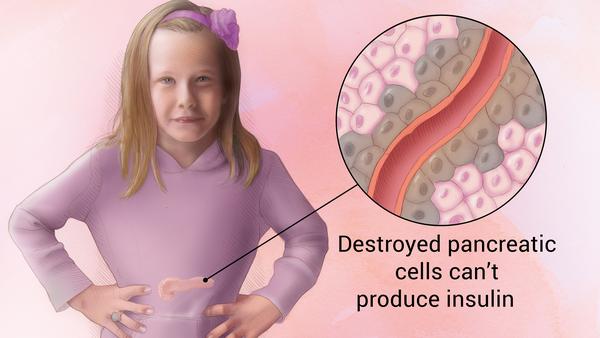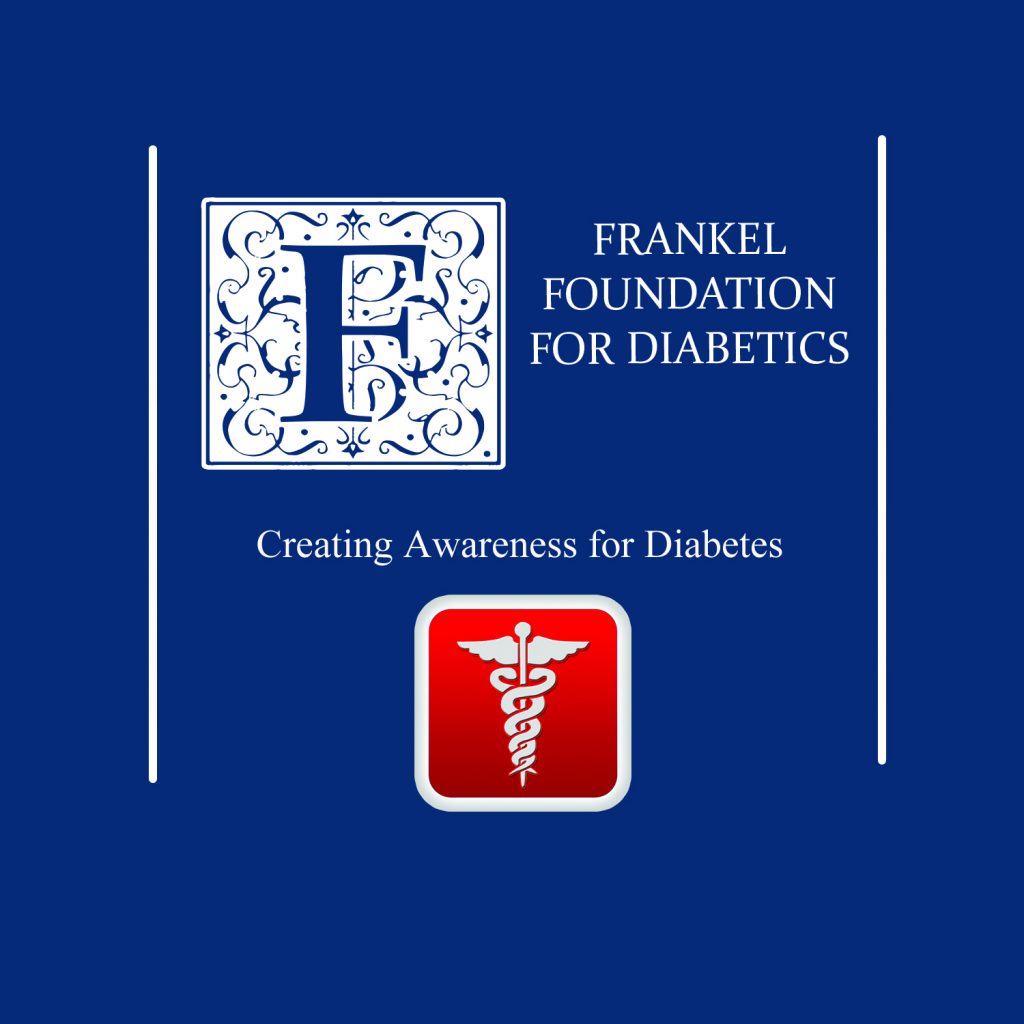Type 1 diabetes
Also called: juvenile diabetes

What is type 1 diabetes?
Diabetes occurs when the glucose, or sugar, in the blood is poorly controlled and consistently high.
Type 1 occurs when the body does not produce enough of the hormone that allows cells to absorb and use glucose. This hormone is called insulin.
While a person can prevent type 2 by avoiding a sugar-rich diet and inactive lifestyle, preventing type 1 is not possible. The immune system attacks clusters of cells in the pancreas that would normally produce insulin, called islets, stopping or slowing insulin production.
Without enough insulin, glucose cannot enter the cells and remains in the bloodstream.
A person with type 1 diabetes will need to take insulin for the rest of their life. Not doing so can result in ever-increasing blood sugar levels and dangerous complications.
Type 1 diabetes can occur at any age, although it is more common in children and young adults.
Symptoms
The physical effects of type 1 diabetes include:
- increased hunger and thirst
- frequent urination
- blurred or unclear vision and problems with sight
- tiredness and fatigue
- weight loss without an apparent trigger or cause
Refer any clear signs of diabetes to a primary care physician, who will administer tests to confirm that these are a result of diabetes.
The honeymoon phase
After receiving a diagnosis of type 1 diabetes, the islet cells responsible for insulin secretion may continue to produce the hormone for a while before ceasing.
During this time, a person will need fewer insulin shots to maintain healthy levels of blood glucose.
Doctors refer to this as the “honeymoon phase” or honeymooning.
This phase can lead to a person with type 1 diabetes mistakenly thinking that they are getting better. The honeymoon phase, while giving the impression of recovering symptoms, still requires close monitoring and regular adjustments of insulin dosage.
Sticking to the recommended treatment plan is essential while honeymooning.
Complications
If a person does not manage these symptoms, a range of dangerous complications might develop.
These include:
Diabetic retinopathy: Excess glucose leads to a weakening of the walls of the retina, the part of the eye that detects light and color. As retinopathy progresses, small blood vessels may form behind the eyes that might bulge and rupture, causing vision problems.
Diabetes is one of the leading causes of blindness among working-age adults.
Diabetic neuropathy: High blood sugar reduces circulation, damaging nerves in the hands and feet and leading to a loss of sensation or abnormal sensations such as burning, tingling, and pain.
As diabetes can also reduce the body’s ability to heal, minor cuts and injuries can lead to more permanent damage, especially as a person may not immediately notice them.
Diabetic nephropathy, or diabetic kidney disease: The kidneys filter glucose from the blood. Too much glucose can overwork them, and progressively cause kidney failure, which may progress to needing dialysis.
Cardiovascular disease: Diabetes can lead to a range of abnormalities that impair the function of the heart and arteries, including heart attack, stroke, and peripheral vascular disease.
As a result of poor circulation, diabetes can also increase the risk of amputations.
Gum disease: Type 1 diabetes can increase the risk of gum disease and tooth loss, meaning that a person with this type should be very careful to maintain dental health.
Depression: Diabetes has strong links with depression.
Diabetic ketoacidosis (DKA) is an acute complication of diabetes that occurs when a person does not meet the requirement for insulin, and the body undergoes extreme stress.
Diabetic ketoacidosis leads to very high blood sugars. The body experiences a shift in metabolism and starts breaking down fat instead of sugar, producing ketones as a waste product.
Ketones can be harmful to the body and cause acidosis. DKA is a medical emergency that requires hospitalization and treatment with intravenous insulin etc.
Carefully managing type 1 diabetes can dramatically reduce the risk of these complications. A landmark study called the Diabetes Care and Control Trial (DCCT) has shown that good blood sugar control can significantly reduce the risk of microvascular complications.
Many of the initial blood tests indicate the presence of diabetes but do not specify which type of diabetes is present
Doctors use clinical and laboratory clues to differentiate between the two types of diabetes.
While exceptions can occur, people with type 1 diabetes tend to present at a much younger age and are lean. Individuals with type 2 diabetes are typically older and overweight.
The doctor will then test for autoantibodies against pancreatic cells in the blood. While antibodies would help the immune system combat diseases and infections, autoantibodies occur when the immune system is attacking healthy tissues incorrectly.
The doctor can also measure C-peptide, an indicator of how much insulin the body produces. They expect it to be lower in type 1 diabetes, as this relates to the destruction of the insulin-producing cells.
